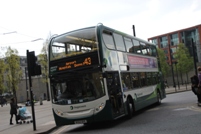
SAE International’s Hybrid Technical Committee has completed the technical standard “J2990-Hybrid and EV First and Second Responder Recommended Practice,” which recommends practices for emergency personnel responding to incidents involving hybrid or electric vehicles.
Response teams must be aware of proper procedures at accidents and emergency situations involving vehicles equipped with high voltage electrical systems.
Among the recommended practices contained in the standard are:
- A procedure for OEM vehicle badging (labelling) placed at standardised, consistent locations on the exterior and/ or interior of the vehicle clearly identifying a vehicle contains high voltage systems for first or second responders arriving at an incident.
- OEMs should follow common standards for disabling high-voltage circuits and that vehicle OEMs provide a minimum of two methods of initiating the disconnection and isolation of the high voltage system from the vehicle.
- OEM guidelines for the creation of second responder (i.e. recovery services and tow truck operators) safety instructions for the inspection and handling of damaged or inoperable hybrid or electric vehicles, with a focus on the high voltage systems.
“We want to see OEMs create a set of steps to follow so second-responders use safe practices. The second responder community should be made aware of proper procedures when towing, handling and/or storing a damaged or inoperable electric vehicle,” SAE committee chairman Todd Mackintosh said.


